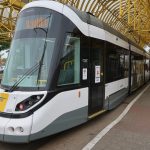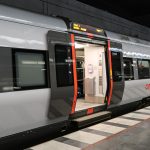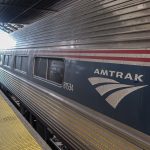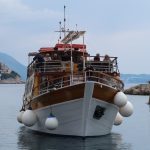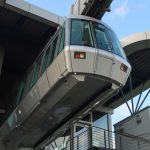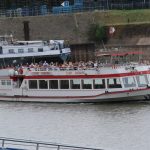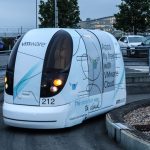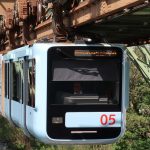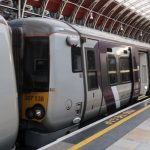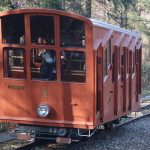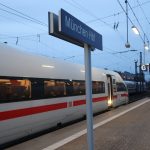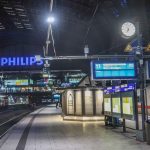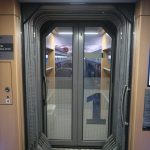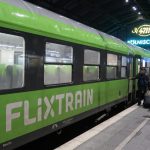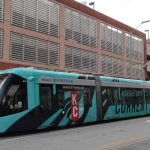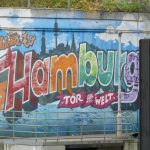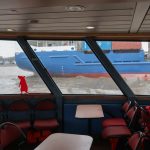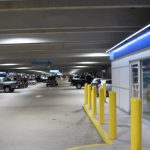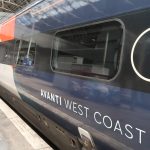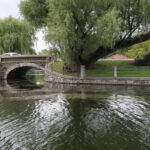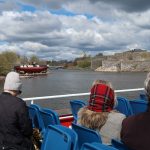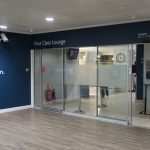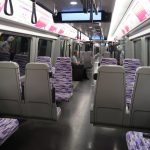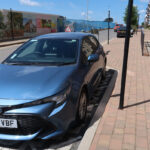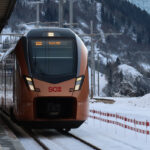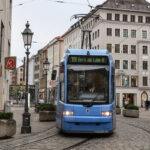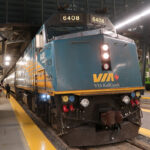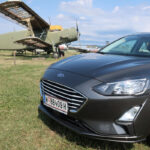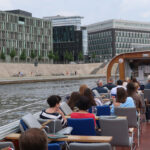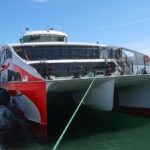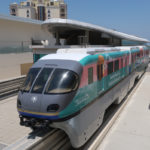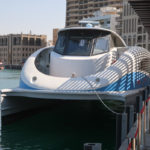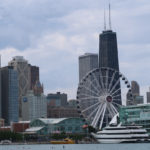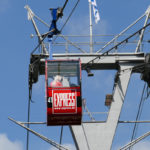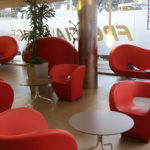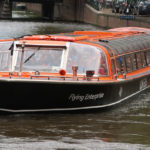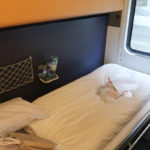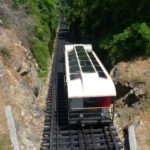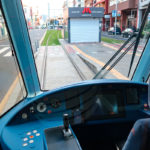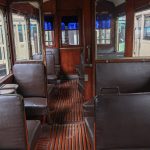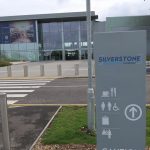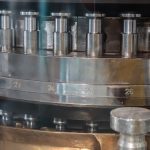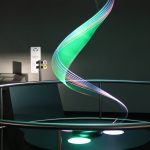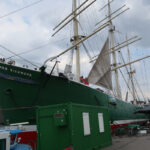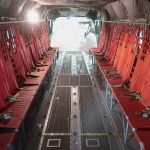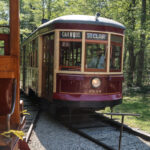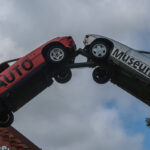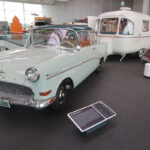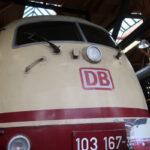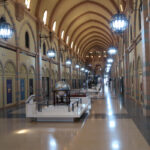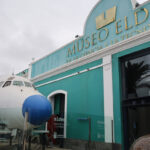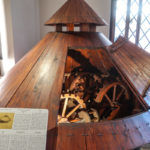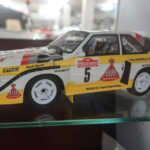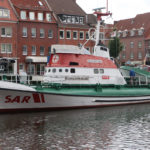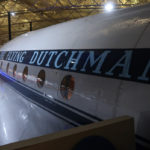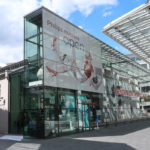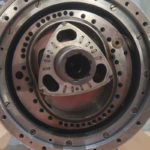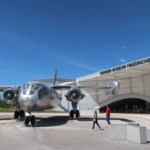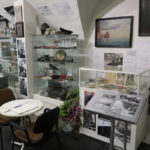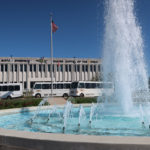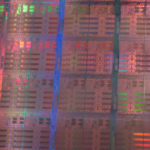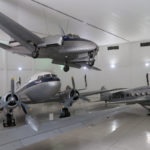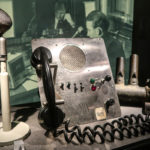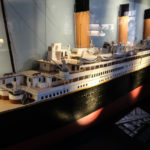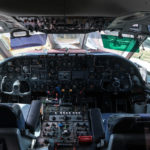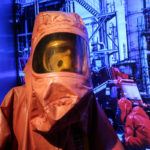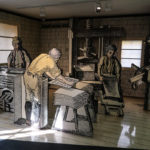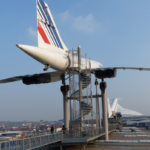Magnetic levitation is such a fascinating technology – and even though the German Transrapid project is no longer followed, it still holds the speed record for a train-alike mass transport vehicle over German ground. In June 1993, the maglev reached 450 kph. Even though a lethal accident stopped all maglev testing in the German Emsland region, the tracks and sites are still existing. In spring 2021, I explored the tracks called Transrapid-Versuchsanlage Emsland (Transrapid Emsland Test Grounds) together with my wife.
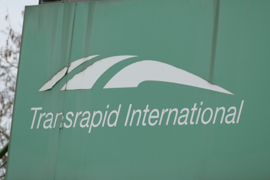
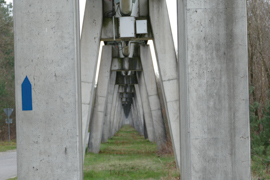
Transrapid – Some Historic Facts
The Transrapid technology is a German development in collaboration of Siemens and ThyssenKrupp companies. The very first steps of the state-funded project were already in the late 1960’s. In 1991 the Transrapid was regarded to be ready to be ready to be used practically. However, all German projects – the most prominent one is likely an improved connection between Munich city center and the airport, have been stopped during development. The only working Transrapid technology is the Transrapid SMT in Shanghai, China. Based on that technology, China is planning to build an improved maglev currently named CRRC 600.
A Lethal Accident in 2006
The (overall) fail of the technology has multiple reasons. A key one is the improvement of high speed rail systems in the meantime. Without a doubt, the deadly accident on 22nd September 2006 was one of the last reasons to stop projects. The test track in the Emsland was also a tourist attraction. A group of visitors had a morning ride on that day, all of them were invited to that right for various reason. While the maglev completed all tests and started the typical ten minute ride, a maintenance car was still on the track and did not get permission to leave it to the depot. 23 people were killed. The reason has been human failure, majorly by the dispatcher of the track.
Test Track Closed in 2011
There have been test rides with later Transrapid generations, but overall, the test track has been closed in 2011. It should have been dismantled in 2012 already, but there are various options how to use that track, e.g. for Hyperloop technology testing. The switches at each oval and in order to reach the depot are still working, some electric connections have been removed, though. In general, it is still possible to purchase Transrapid trains and infrastructure for active usage. One of the most prominent options is likely the maglev connection of Pittsburgh Airport.
Former Transrapid Test Track – Location
The Transrapid Test track has a total length of 31.8 kilometers. It has one straight, which has been used in either direction and loops on the North side and the South side of the track, which roughly operates between the cities Dörpen and Lathen. The most prominent cities nearby are Meppen and Papenburg. The whole track is still existing, there are, however, some parts which cannot be accessed by car. The road parallel to the straights of the track is not allowed for traffic, but used by the locals frequently.
Transrapid – Former Visitor Center & Depot
If you look at the former visitor center from outside, you could feel that it is still operating. The signs around are still there (but look a bit of rusty), the platform, with which you could board Transrapid trains is still existing. The most obvious catch that something is wrong here is likely the rotten Transrapid train in front, which lost quite a bit of its (I guess, at least) red livery. It is one section of the Transrapid 07, the other one is located at the Max Bögl company grounds in Sengenthal. An interesting fact is that apart from the crashed section of the Transrapid 06, only Transrapid 03 has been scraped. All other trains are still existing, some in museums some in locations like the one in Lathen. I saw Transrapid trains in front of the Deutsches Museum Bonn or at the Technikmuseum Speyer.
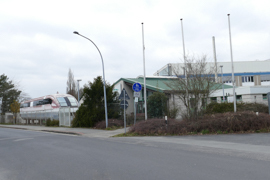
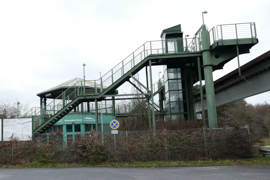
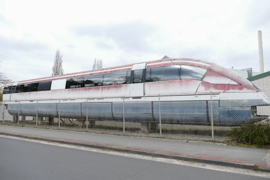


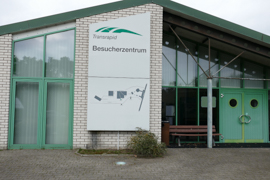
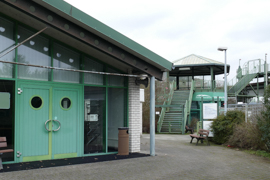
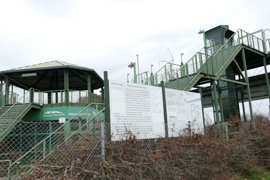
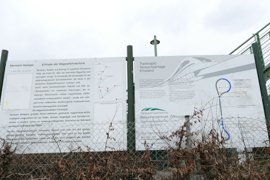
If you walk around the corner, you still see the former depot. The train shed is nowadays used by a development project for inductive charging of electric cars, so that it is still in use. They were happy to get rid of their last operational and good condition Transrapid trains a few years ago. Unfortunately, I got the information too late that this train still exists and is located not too far away. The family of the main inventor of the maglev technology, Hermann Kemper, is also big in meat processing – and thus, this last Transrapid train, the Transrapid 09, is now located in front of their meat packing plant in Nortrup.
Part of the original crashed train still in depot
The most impressive thing you see is one end section section of a Transrapid train – which is in fact the E2 end of the Transrapid 08 train which crashed in 2006. The middle section is still existing as well, but not visible. You also see a lot of maintenance material, like the maintenance cars involved in the 2006 crash. The area is not accessible, of course – but you got a good view from outside.

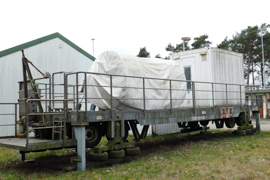

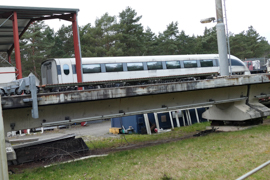

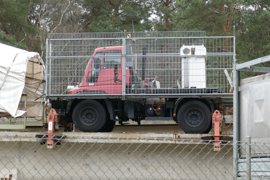
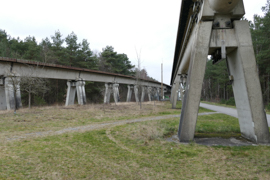
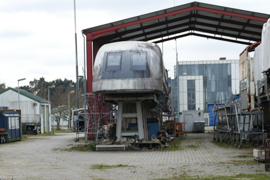
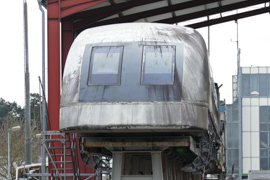
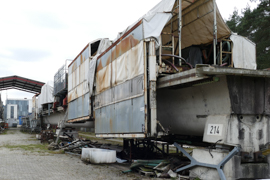
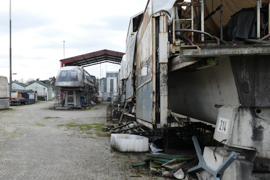
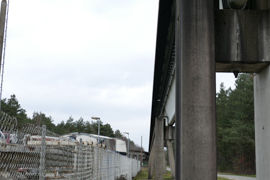

Transrapid – Memorials
The “official” memorial for the 23 victims of the 2006 Transrapid crash is located right opposite of the visitor center. There are 23 trees planted and a memorial stone stating all the names of the victims. There seemed to be something like a memory book or display, but it is completely rotten nowdays – quite a shame after just fifteen years.
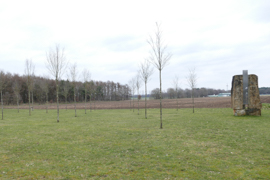

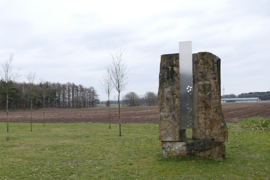
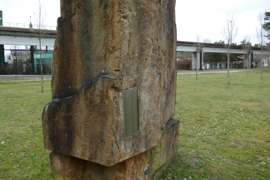
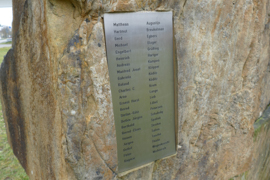
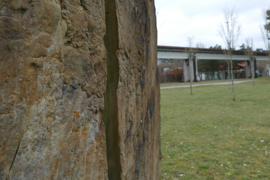
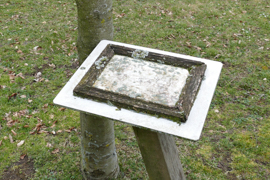
The interesting thing about the “tourist memorial”, how I am tempted to call it, is that it is not at the right location. I have no exact idea about why they did that. The place where the crash really happened is only accessible my the maintenance road and you might want to avoid tourism. Maybe you just wanted the memorial to be close to the visitor center and platform. At the place where the crash really happened, there is a second memorial, which is maintained (by locals or relatives?).
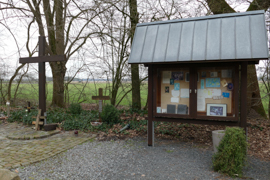
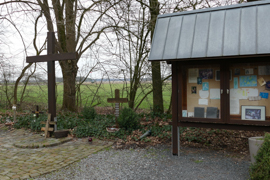
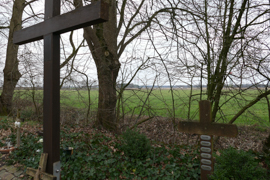
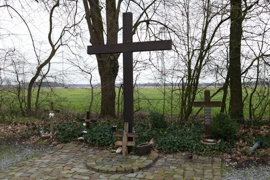
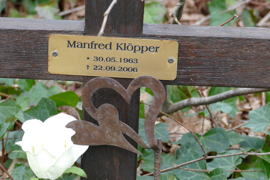
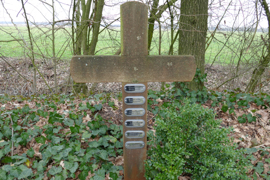
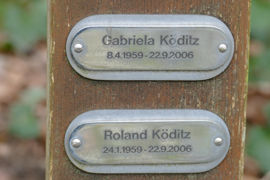
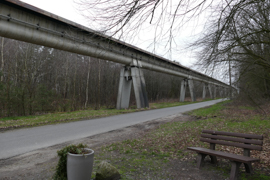
Transrapid – The Track and Other Viewpoints
We explored major parts of the straight tracks – following the two loops at each and is a bit of more tricky, but doable. It is very impressive to see how they experimented with different tracks like steel and concrete constructions, but also natural influences. At one point close to the Northern loop, there is a wall next to the track, which has been built to evaluate the influence of wind to the stability of the vehicles. As said, the switches are still working – if you are really lucky, it feels to happen that they operate them from time to time.

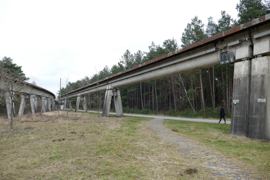

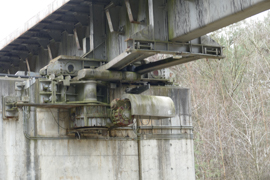
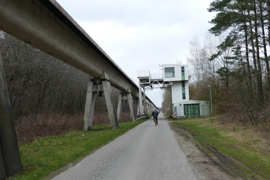
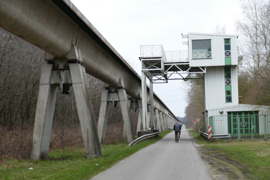


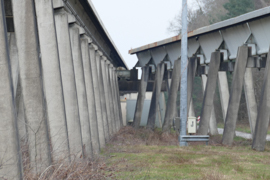
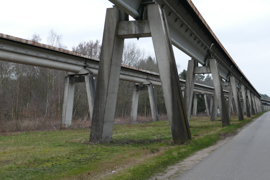


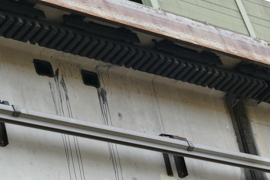
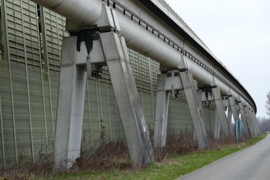
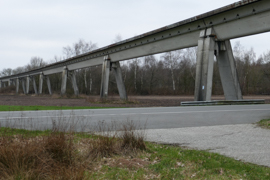
Close to the Northern point in Dörpen, there are also still two Transrapid facilities existing. There is the Besucherhügel (visitors hill), which gave a view to a major part of the Northern loop and was thus very popular. The artificial hill still exists, we however did not climb on it. A very obvious building East of Dörpen is the former Aussichtsturm, i.e. observation tower. It is no longer accessible, but it feels to be in really good conditions. From the ground, you even still see the Transrapid illustrations on the wall.
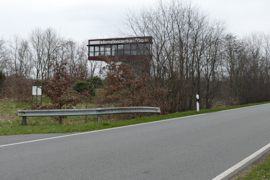
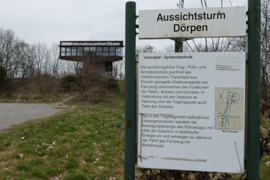

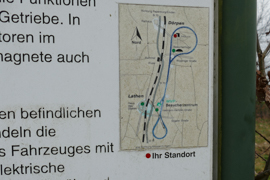

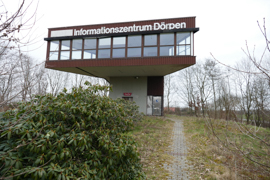


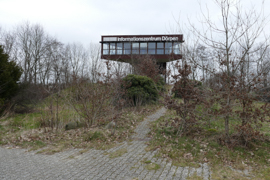
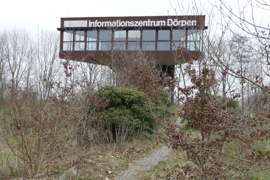
Transrapid – My View
I know about the pros and cons of the technology, but visiting this place made me really sad. Of course, first of all due to the victims of the crash – but overall I feel it is an amazing technology. If you nowadays ask for reducing short-distance flights, these trains are still the alternative to go to me. Whenever you take the S-Bahn train from Munich Main Station to Munich Airport, you might now think about this technology, which would have cut down the traveling time from 40 minutes to 15. In contrast to national peers like Frankfurt Airport, Cologne/Bonn or Dusseldorf Airport, Munich Airport is still not connected to a high-speed public transport system.
Non-Aviation Transportation
The category Other Transportation covers all transportation but aviation:
Technical Museums – Other Postings
Here are all other Flyctory.com postings dealing with technical museums and exhibitions:




